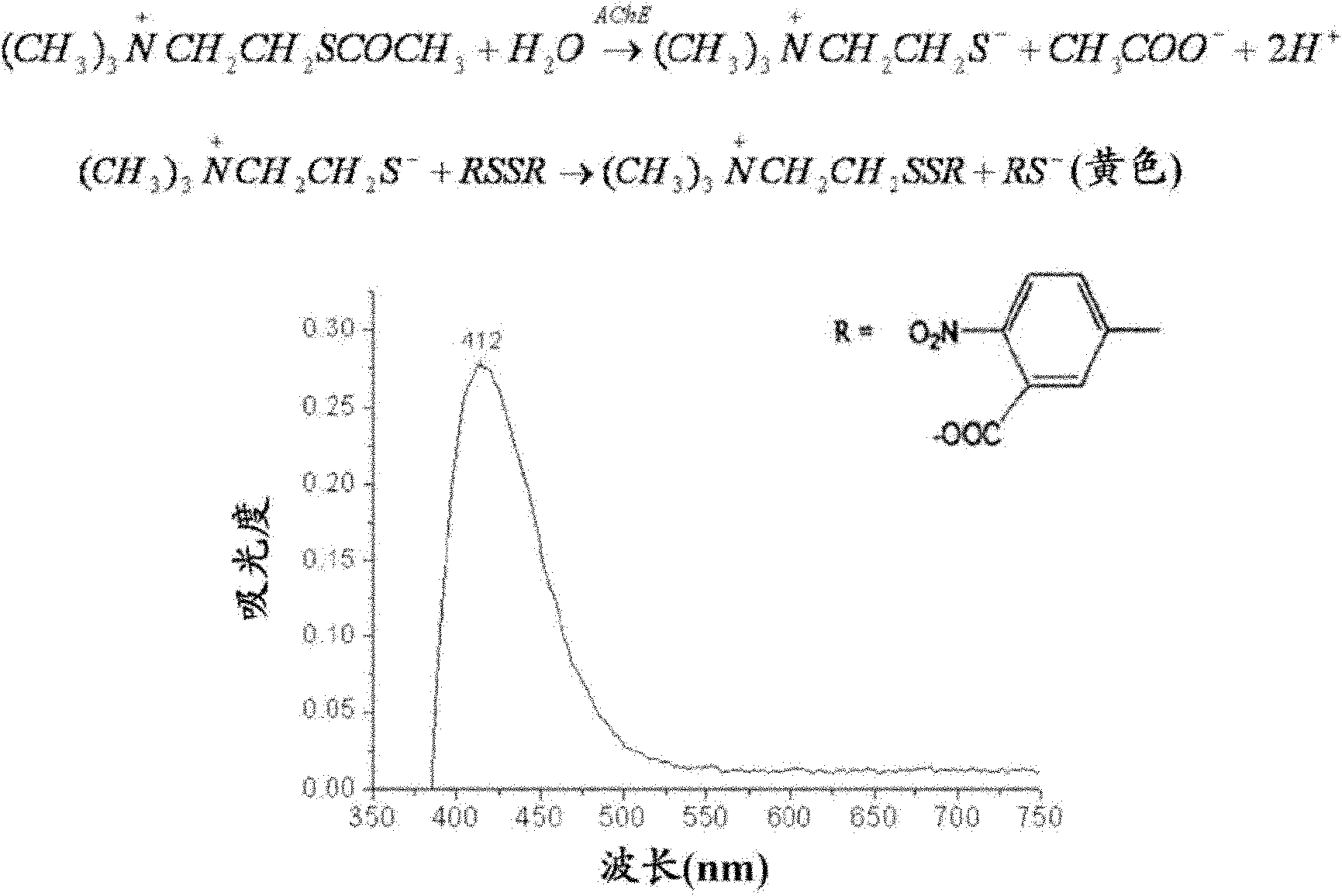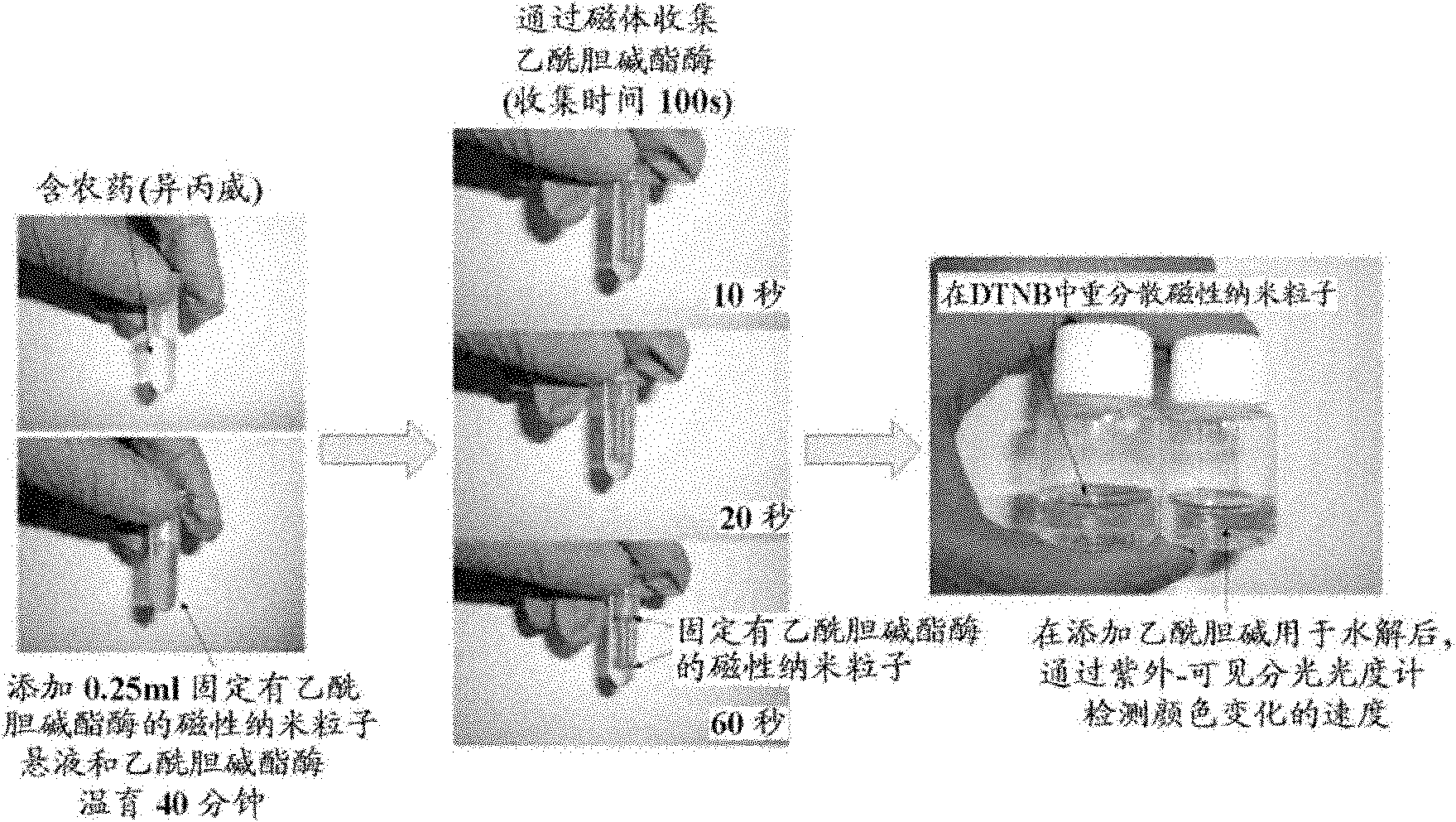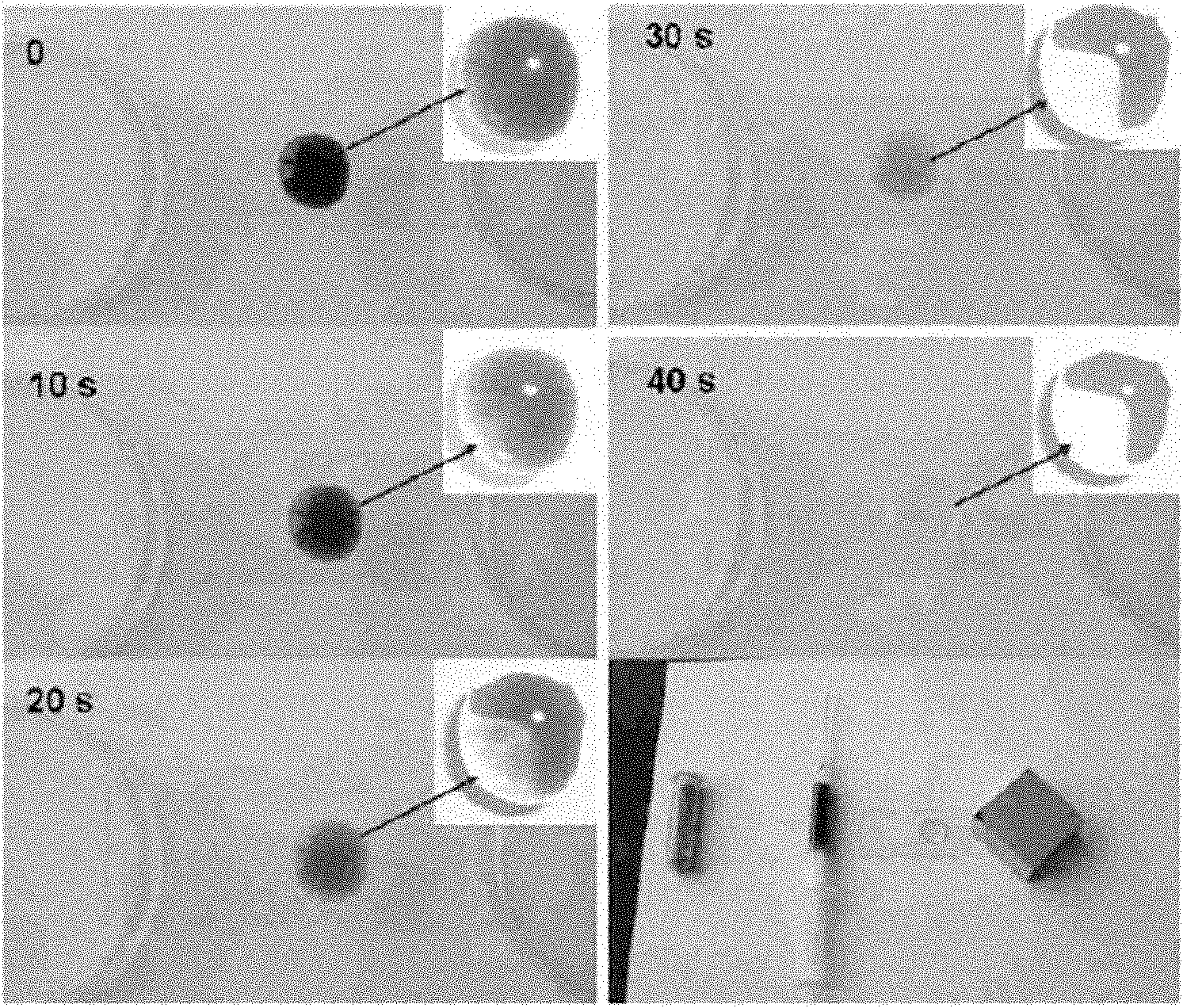Method and device for detecting pesticide
A technology of pesticides and magnetic nanoparticles, applied in the direction of biochemical equipment and methods, microbial measurement/inspection, etc., can solve problems affecting measurement
- Summary
- Abstract
- Description
- Claims
- Application Information
AI Technical Summary
Problems solved by technology
Method used
Image
Examples
Embodiment 1
[0193] Embodiment 1: Preparation of magnetic nanoparticles (MNPs)
[0194] This example provides an embodiment for the preparation of magnetic nanoparticles, i.e., the synthesis of magnetic nanoparticles via the co-precipitation route, as described in the following method:
[0195] 1) 0.98g (4mM) FeCl 3 ·6H 2 O, 0.556g (2mM) FeSO 4 ·7H 2 O and 1.152g (6mM) citric acid were dissolved in 75ml deionized (DI) water and loaded into a 250ml three-neck flask.
[0196] 2) The above solution was heated in water baths at different temperatures (0, 20, 40, 60, 80 and 100° C.), degassed in vacuum for 0.5 h, and then input argon (Ar).
[0197] 3) Dissolve 4 g (0.1 M) NaOH in 25 ml deionized water and apply ultrasound to remove soluble O 2 .
[0198] 4) Keep the NaOH solution in a water bath for 0.5h, and then quickly inject it into a three-necked bottle (containing Fe salt).
[0199]5) The reaction was held for 1 h, then naturally heated / cooled to RT.
[0200] 6) Collect the obtain...
Embodiment 2
[0202] Example 2: Immobilization of acetylcholinesterase on magnetic nanoparticles
[0203] This example provides an embodiment of the immobilization of acetylcholinesterase to magnetic nanoparticles.
[0204] Add 2ml of the magnetic nanoparticle solution (1.93g / L) in step 6) in Example 1 to a 5ml centrifuge tube, and obtain magnetic nanoparticle powder by centrifuging at 14000RPM for 30min. The obtained magnetic nanoparticle powder was washed with DI water and re-centrifuged several times. A 1 ml solution of acetylcholinesterase solution (1 U / ml) containing 1 mg / ml BSA was added to the tube and stored at 4°C for 20 h. Magnetic nanoparticles immobilized with acetylcholinesterase were obtained by magnetic separation, and washed with 4 ml of PBS one time to remove free acetylcholinesterase adsorbed on the surface of the magnetic nanoparticles. Magnetic nanoparticles immobilized with acetylcholinesterase were redispersed in 2 ml PBS and stored at 4 °C before use. The amount of...
Embodiment 3
[0205] Embodiment 3: The ratio of the cholinesterase added and magnetic nanoparticle is to the influence of enzyme immobilization amount
[0206] In this example, the effect of the ratio of cholinesterase to magnetic nanoparticles on the amount of enzyme immobilization during the immobilization of cholinesterase was studied.
[0207] Figure 13 In a certain amount of magnetic nanoparticle solution, the relationship between the amount of acetylcholinesterase added during immobilization and the actual immobilized amount is shown (n=3). Such as Figure 13 As shown, the range of enzyme immobilization that can be achieved is 0-330U / g particles. When the amount of enzyme added is 0.2ml (1U / mL), the amount of enzyme fixed on the magnetic nanoparticles after fixation is only 20.1U / g, and the immobilization efficiency is 35.8% (fixed amount / actual amount added); increase, the immobilization amount and immobilization efficiency all increase rapidly, when the amount of enzyme added is...
PUM
| Property | Measurement | Unit |
|---|---|---|
| concentration | aaaaa | aaaaa |
| diameter | aaaaa | aaaaa |
| particle size | aaaaa | aaaaa |
Abstract
Description
Claims
Application Information
 Login to View More
Login to View More - R&D
- Intellectual Property
- Life Sciences
- Materials
- Tech Scout
- Unparalleled Data Quality
- Higher Quality Content
- 60% Fewer Hallucinations
Browse by: Latest US Patents, China's latest patents, Technical Efficacy Thesaurus, Application Domain, Technology Topic, Popular Technical Reports.
© 2025 PatSnap. All rights reserved.Legal|Privacy policy|Modern Slavery Act Transparency Statement|Sitemap|About US| Contact US: help@patsnap.com



